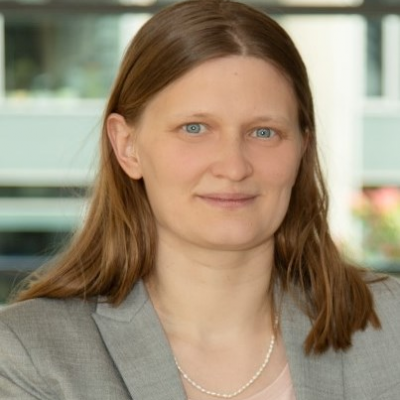Title
Synaptic plasticity controls the emergence of population-wide invariant representations in balanced network models
Bio
Tatjana Tchumatchenko is Professor and Deputy Director of the Institute for Physiological Chemistry at University Medical Center Mainz and Group Leader at the Institute of Experimental Epileptology and Cognition Research at the University Medical Center Bonn. She is a physicist by training but received a PhD in Theoretical and Computational Neuroscience in Göttingen University, in 2011. She was a joint postdoctoral fellow at Max Planck Institute for Dynamics and Self-Organization, the Bernstein Center Göttingen, and the Interdisciplinary Collaborative Research Center in 2011. From 2011 to 2013, she completed a postdoctoral fellowship at the Center for Theoretical Neuroscience, Columbia University, New York City. Then she was a Group Leader at the MPI for Brain Research from 2013 to 2020. She has received a number of grants and awards of excellence such as Behrens-Weise-Foundation Award, Heinz Maier-Leibnitz-Prize of the German Research Foundation and Dollwet Foundation Award. In 2018, she was selected by the Focus Magazine as one of 25 young innovators who will shape Germany in the next 25 years. Tchumatchenko lab aims to uncover how the neural code works and what computational strategies neurons have. The lab is a computational team that works closely with experimental groups.
Abstract
The intensity and features of sensory stimuli are encoded in the activity of neurons in the cortex. In the visual and piriform cortices, the stimulus intensity re-scales the activity of the population without changing its selectivity for the stimulus features. The cortical representation of the stimulus is therefore intensity-invariant. This emergence of network invariant representations appears robust to local changes in synaptic strength induced by synaptic plasticity, even though: i) synaptic plasticity can potentiate or depress connections between neurons in a feature-dependent manner, and ii) in networks with balanced excitation and inhibition, synaptic plasticity determines the non-linear network behavior. In this study, we investigate the consistency of invariant representations with a variety of synaptic states in balanced networks. By using mean-field models and spiking network simulations, we show how the synaptic state controls the emergence of intensity-invariant or intensity-dependent selectivity by inducing changes in the network response to intensity. In particular, we demonstrate how facilitating synaptic states can sharpen the network selectivity while depressing states broaden it. We also show how power-law-type synapses permit the emergence of invariant network selectivity and how this plasticity can be generated by a mix of different plasticity rules. Our results explain how the physiology of individual synapses is linked to the emergence of invariant representations of sensory stimuli at the network level.
















